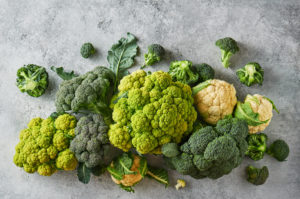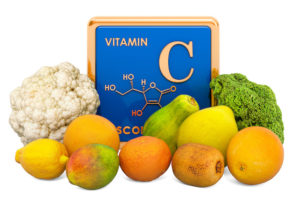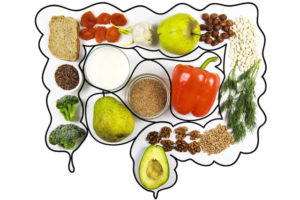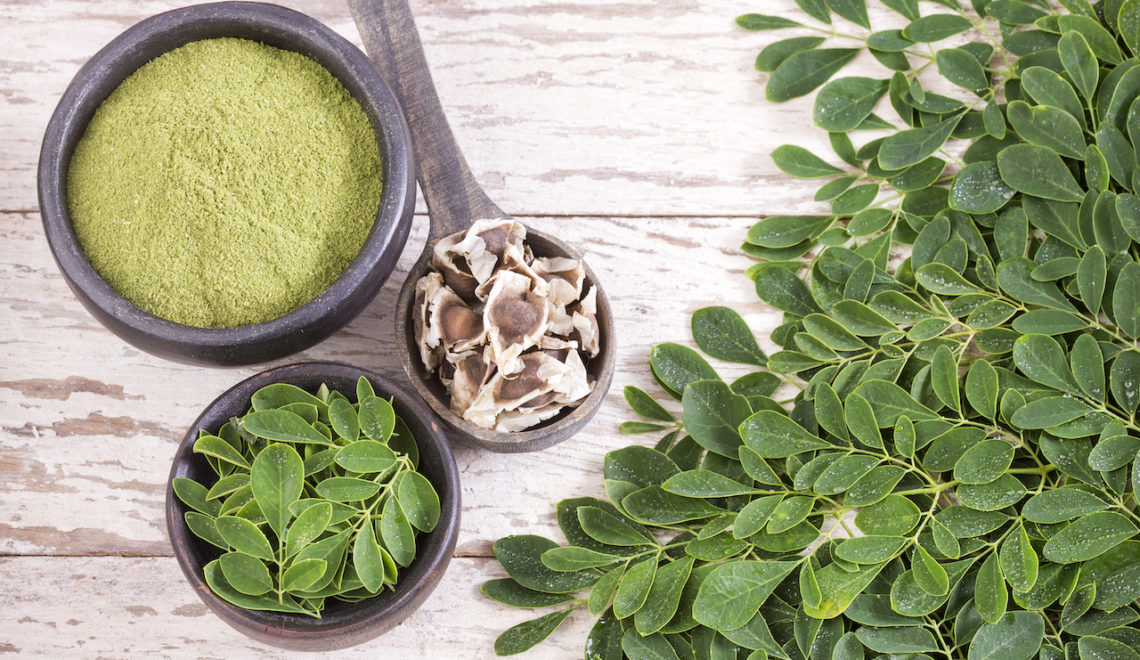Our world has been rocked by the Coronavirus disease (COVID-19). At a local and global level, people are wondering what the next few weeks and months will bring; many people are worried about their health. We hope to offer support, as well as helpful information about immunity, especially during this time of uncertainty. There is so much we cannot control during stressful situations, but there are little things we can do that provide relief.
Understanding the powerful role that nutrition plays in health—especially immune health—is vital right now. What we feed our bodies also feeds the systems that compose our bodies. While many people are sharing about specific foods and supplements that can boost immunity, the real power comes from healthy eating and long-term lifestyle patterns.
We hope to provide some “best practice” guidelines here, while also delving into the food science of immunity-boosting foods like moringa.
Long-term Health
Sustained, daily habits build long-term health. That’s why at Kuli Kuli, we work to make it easier to incorporate nutrient-dense foods, like moringa, into your everyday routine. When we incorporate healthy routines into our daily life, they have a tendency to stick—and lead to additional healthy habits.
It’s the collection of these habits that can contribute to a person’s overall sense of health and wellbeing. At Kuli Kuli, we believe in the abundant power, potency, and health properties of moringa, but we also know that there isn’t just “one magical plant” or supplement that can fix everything or offer a “cure-all.”
This article hopes to shed light into some of the beneficial properties of moringa, and how they correlate with immune health, while also acknowledging the need for long-term healthy habits. While food is one of the best forms of medicine, this article does not constitute medical advice— and the information within is not claiming to be a cure or remedy for COVID-19, a virus that can lead to severe acute respiratory syndrome, heavily impacting the lungs.
Our goal is to empower readers to take action in boosting their own health and immunity, and consider their long-term health goals and habits.
Harnessing Nutrition & Health: What is Sulforaphane?
There is a well-studied isothiocyanate called sulforaphane, that may offer insight into how the isothiocyanate in moringa operates. This moringa-based isothiocyanate called moringin is not well-studied yet, but it may possess similar properties to the isothiocyanates found in other vegetables.
We find sulforaphane primarily in the cruciferous vegetable, broccoli. Other cruciferous vegetables such as cauliflower, kale, brussels sprouts, and cabbage, contain other isothiocyanates. They occur in the plants as precursor compounds called glucosinolates, which are activated to isothiocyanates upon eating those plants.

Sulforaphane-rich Veggies
The moringa plant also has such a precursor, converted to the isothiocyanate moringin that acts in a similar way as sulforaphane to the extent that comparisons have been made (Borgonovo, Leone, Battezzati, Bertoli, and Mazzini, 2020). For now, since isothiocyanates are chemically related, and seem to act in very similar ways on biological systems, we can infer health benefits of moringin from studies on sulforaphane.
As time and research unfolds, we may see similar results with moringin, as with sulforaphane, which appears to help prevent certain types of lung damage in very limited tests and very specific disease models (Sun, Niu, Wu, and Shan, 2018). Again, there is no direct link to COVID-19, and much research still needs to be done on moringin.
Sulforaphane targets what’s known as the Nrf2 (Nuclear factor erythroid 2-related factor 2) pathways. Nrf2 regulates the expression of antioxidant proteins that can decrease the effects of oxidative stress from inflammation and injury (Sun, Niu, Wu, and Shan, 2018) and (Cho, Miller-DeGraff, and Wang, 2018). The studies show that the impact sulforaphane has on Nrf2 helps to protect and/or mitigate the effects of lung damage.
Natural Killer Cells
Sulforaphane has also been studied for the impact it can have on the influenza virus. The influenza virus is quite different than COVID-19; however, it interacts with similar systems and functions in the body. Natural killer cells are one of the body’s major defense mechanisms against pathogens, including viruses; these are the cells that kill any infected or damaged cells so that they can then be cleared out of the body.
Sulforaphane increases natural killer cell production (Jones, Robinette, and Müller, 2016). In addition to increasing natural killer cells, sulforaphane also helps restore macrophage function (Patel, Dial, Wu, Gauthier, Wu, W., and Thomas 2020). Macrophages are critical to immune function, just like natural killer cells. Macrophages are white blood cells that “eat” unwanted particles, such as dead cells and bacteria. They are critical for cleaning and repairing the body after an immune attack.
Science behind the isothiocyanate sulforaphane has positive implications for immunity. While morginin has not been studied in nearly the same detail as sulforaphane, these two phytonutrient isothiocyanates share many similarities in laboratory and other model systems.
Immunity & Vitamin C Boosts
In addition to the isothiocyanate benefits, moringa is what we call a “functional food.” Scientists associate Vitamin C with immune health. Fresh moringa leaves contains a lot of Vitamin C.

Foods High in Vitamin C
What does vitamin C have to do with viruses? A virus like COVID-19 creates a cytokine storm that creates oxidative stress and inflammation within the body; this causes damage to tissue and organs such as the lungs. One of the benefits of large dose vitamin C is that it’s a powerful antioxidant that can combat the effects of oxidative stress and down-regulate inflammation (Cheng, Shi, Yanagisawa, Levy, and Saul, 2020).
The oxidative stress from the cytokine storm is a key pathology that leads to acute respiratory distress syndrome (ARDS). Large doses of vitamin C can help decrease the oxidative stress, and hopefully run interference on the progress of the pathology. Moringa leaves can have 220mg of vitamin C per 100g, which is 7x that of the common orange. (Gopalakrishnan, Doriya, and Kumar, 2016).
Furthermore, the amount of moringin in 1 Tbsp of moringa is equivalent to, if not greater than the sulforaphane (present in the vegetable as the precursor “glucoraphanin”) content of most nutritional supplements. In addition, 1 Tbsp of moringa provides a more dense and complex nutrient profile than a single isolate in a supplement, or even in a cup of broccoli or a plate full of kale. More research specifically on moringin could provide powerful insight into the specifics of this isothiocyanate.
In addition to this specific phytochemical in which moringa is very rich, there are tons of other phytonutrients in moringa that add to the health benefits of consuming it daily. Focusing on “real and whole foods” is important to building immunity and long-term health.
Food is fuel and vitality.
Feeling Overwhelmed? Quick Tip!
Food science can feel dense at times. We have so many choices as consumers: what to buy, how to use it, what it does for our body. During stressful times, it can help to keep it simple.

Colorful and healthy foods
One tip that’s fun and easy to remember, is to purchase food that your grandparents (or older generations) would easily recognize. This means load up on those vegetables and fruits! It’s important to eat colorful foods that are nutrient-dense.
What we do every day helps nourish our immunity and overall health, not just how we react in times of crisis. Eating a variety of whole foods gives our bodies the nutrients, minerals, and vitamins that we need to support a strong immune system. Supplements can fill some nutritional gaps, but they cannot replace a well-balanced diet.
Gut Health & Moringa
There’s another layer to moringa in reference to immune health, and a rather important one. Hippocrates stated that “all disease begins in the gut.” If so, then health also begins in the gut, and that health comes from having a strong intestinal tract and a diverse microbiome.

Gut Health and Microbiomes
The health of the microbiome is indicative of the health of the person. Moringa helps with the integrity of the gastrointestinal tract by helping to provide a rich and diverse microbiome. A robust microbiome is essential for fighting off any virus, bacteria, or other pathogen the body might come up against.
In addition to incorporating moringa, microbiome health can also be improved by:
- Eating probiotic and prebiotic rich foods
- Eating a variety of vegetables and fruits (also increases the phytonutrient profile)
- Getting in lots of fiber from whole foods like vegetables, fruit, nuts, seeds, and legumes
- Letting the digestive system rest between meals (not snacking all day long)
Health Benefits Summary
We hope this article brings clarity to the importance of supporting the body with nutritional and potentially beneficial phytochemicals. Moringa offers so many of them. These phytochemicals (sometimes called phytonutrients) help support all functions and systems within our bodies, including our immune system.
The isothiocyanate story is just one example of the healing powers that are within our food. If it ever feels overwhelming, remember the simple tip to eat a diverse diet rich in vegetables and fruit. Feed your immune system—and all your systems—with nutrient-dense food.
Remember, we might feel as if we have no control over what’s happening in the world right now, but we do have control in what we put into our bodies—physically, mentally, and emotionally. Moringa and similar, nutrient-dense, phytonutrient-rich foods are one piece of a much larger health puzzle.
If you want more information on how to use food as medicine, we have a great article all about that here, as well as another piece here offering five tips to nourish your immunity.
References
Borgonovo, G., Leone, A., Battezzati, A., Bertoli, S., & Mazzini, S. (2020, February 22). Moringin, A Stable Isothiocyanate from Moringa oleifera, Activates the Somatosensory and Pain Receptor TRPA1 Channel In Vitro. Retrieved March 5, 2020, from https://www.mdpi.com/
Cheng, R., Shi, H., Yanagisawa, A., Levy, T., & Saul, A. (2020, February 16). Early Large Dose Intravenous Vitamin C is the Treatment of Choice for 2019-nCov Pneumonia. Retrieved March 5, 2020, from http://orthomolecular.org.
Cho, H.-Y., Miller-DeGraff, L., Wang, X., Bell, D. A., & SKleeberger, S. R. (2018, December 5). Sulforaphane enriched transcriptome of lung mitochondrial energy metabolism and provided pulmonary injury protection via Nrf2 in mice. Retrieved March 5, 2020, from https://www.ncbi.nlm.nih.gov.
Gopalakrishnan, L., Doriya, K., & Kumar, D. S. (2016, June). Moringa oleifera: A review on nutritive importance and its medicinal application. Retrieved March 5, 2020, from https://www.sciencedirect.com.
Jones, S., Robinette, C., & Müller, L. (2016, January 28). Effect of Broccoli Sprouts and Live Attenuated Influenza Virus on Peripheral Blood Natural Killer Cells: A Randomized, Double-Blind Study. Retrieved March 5, 2020, from https://www.ncbi.nlm.nih.gov/.
Patel, V., Dial, K., Wu, J., Gauthier, A., Wu, W., & Thomas, D. (2020, February 1). Dietary Antioxidants Significantly Attenuate Hyperoxia-Induced Acute Inflammatory Lung Injury by Enhancing Macrophage Function via Reducing the Accumulation of Airway HMGB1. Retrieved March 5, 2020, from https://www.mdpi.com/.
Sun, Z., Niu, Z., Wu, S., & Shan, S. (2018, April 5). Protective mechanism of sulforaphane in Nrf2 and anti-lung injury in ARDS rabbits. Retrieved March 5, 2020, from https://www.ncbi.nlm.nih.gov.
What do you do to “feed” your immune system? Feel free to let us know in the comments below.
Follow us @kulikulifoods so we can see some of your favorite ways to fuel your system.













Thank you I am moringa lover from Nepal its so informative love you kulkuli .
Hi Hement! Thank you so much for your comment – we’re so glad you are a fellow moringa lover. It truly is the miracle tree!
Great job Shannon with the article. Your knowledge is spot on.
Can you please tell me an approximate amount of your moringa powder required to give me similar benefit to the sulforaphane in a 100 gram amount of broccoli sprouts? Or can you give me the amount of the sulforaphane like component in a serving of your powder and it’s bioavailability? I want to compare it with sprouts and Avmacol supplement.